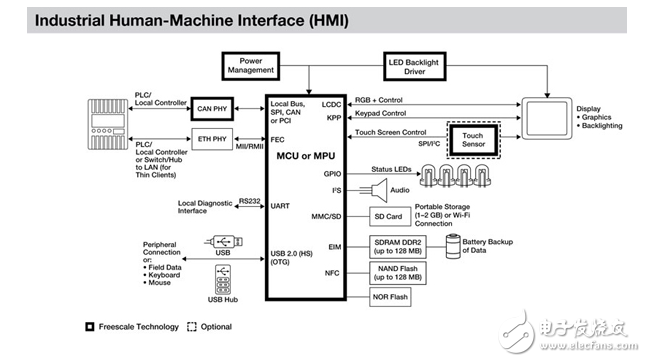
资料下载

工业触摸屏时代的到来
工业触摸屏时代的到来
有开关和按钮,由车轮和滑块驱动的线性或旋转电位器,工业控制面板是机械运动场。作为机械,他们有可能成为问题的根源,从焊接接头到运动部件。为一组特定的控制任务而构建,这些板很难,如果不是不可能的话,可以重新配置。他们不容易学会如何使用,而且对于复杂的操作,常常伴随着屏幕显示设备状态。
今天,这些都是消失的品种。相反,新的安装完全是固态的,它们使用GUI(图形用户界面)驱动的显示屏幕上的触摸屏。通过改变屏幕图像,触摸屏上面的区域可视地链接到不同的功能。这意味着,以及可重构,系统可以指导用户通过操作,也许在启动或关闭,也许当一些不寻常的事情发生。虽然这种方法的优点是界面更健壮、更易于清洗和更广泛的环境耐受性,但它的代价是:软件和复杂的软件。

Of course, the different equipment, controlled by the screens, is itself managed by processors and software. The individual pieces of machinery communicate with each other and the overall system controller over some kind of bus, like CAN or Industrial Ethernet. Usually there is a strong element of real-time control needed and the applications may be safety critical, so the architecture of the entire system needs to be designed to segregate the touch screen controller and GUI from the overall system data, except through a secure defined interface. In this way, any issues with the GUI software will have no effect on the safety of the overall system or individual pieces of equipment.
This segregation might be caused by running all the GUI and touch screen activities on a separate processor running a general purpose operating system while the control activities operate on a real time operating system on its own processor. The processors might be physically separate devices, separate cores on a single chip or virtual cores created by virtualization software.
In this article, although we will be looking at physically separate controllers, much of the discussion will also be relevant to a touch screen controller running in a virtual core.
声明:本文内容及配图由入驻作者撰写或者入驻合作网站授权转载。文章观点仅代表作者本人,不代表电子发烧友网立场。文章及其配图仅供工程师学习之用,如有内容侵权或者其他违规问题,请联系本站处理。 举报投诉
- 相关下载
- 相关文章





